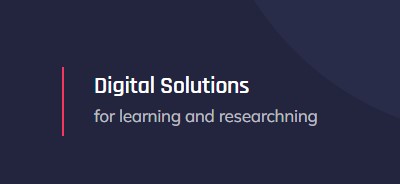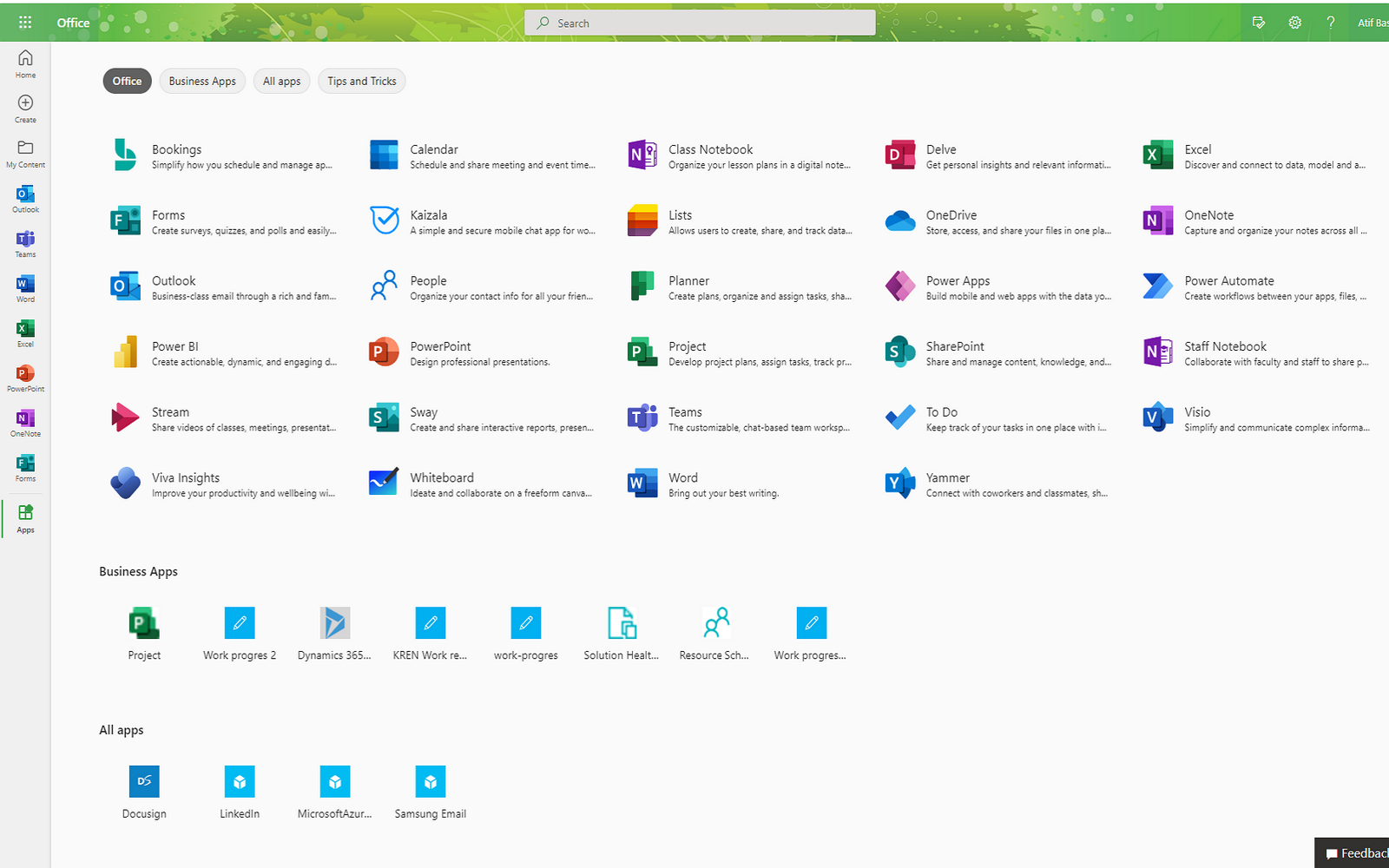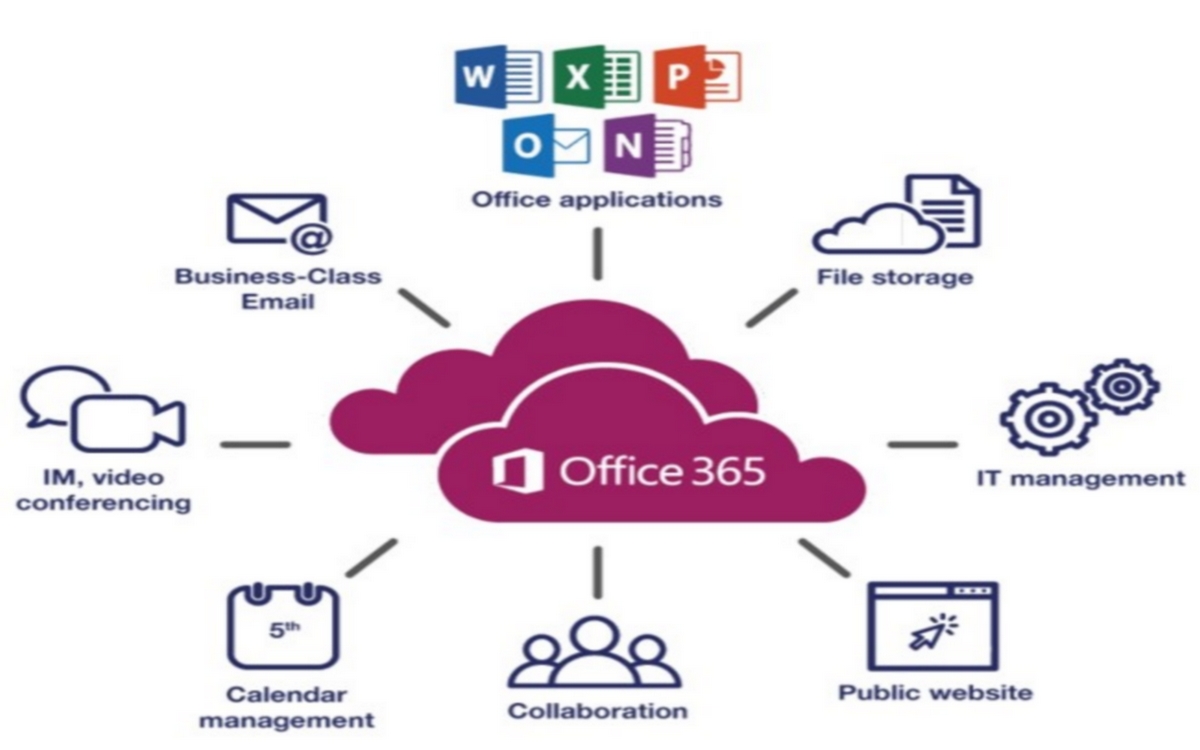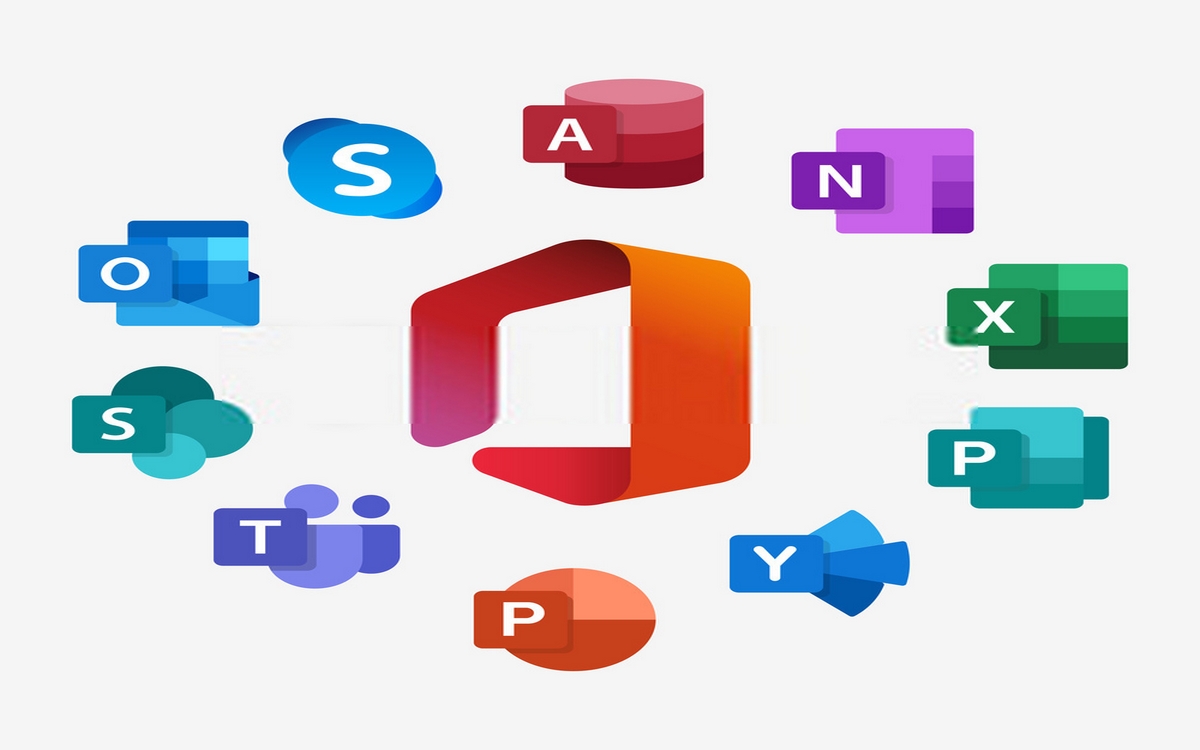Office online
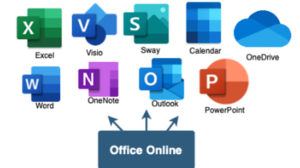
Office online is a free version of Office 365. It is linked to your Outlook/Microsoft account (if you don’t have it, you can create it by going to Outlook.com). Because it’s a web application that runs in your browser, Office Online will run on everything, from PCs and Chromebooks to iPads and Android tablets.
Office online include: Word, Excel, Visio, PowerPoint, Outlook, Calendar, Sway, OneNote, OneDrive.
All apps in this group have both browser and desktop versions, except Sway which only works in a browser.
An advanced document creation and processing tool, one of the oldest and most popular Microsoft Office apps.
A spreadsheet program, powerful data visualization and analysis tool. It has its own formula editor and supports technologies like VBA, PowerPivot, DAX.
A vector diagram creation app. It has a large number of objects, grouped by different types of activities. The app helps to easily design business processes.
Another old Office app, used for creating presentations.
One of the best known email clients. It also includes features like calendar and task management integrated with To Do.
An app included in Outlook that is used for scheduling meetings. Supports the creation of various calendars, including automatic, such as the national holiday calendar.
A relatively new app, which allows you to create and share interactive reports, presentations, projects, landing pages, and personal stories right in a browser. Compared to PowerPoint, Sway is lighter, more intuitive, web-based and focused on sharing.
An app for all kinds of notes, including audio, video, drawings. Content can be sorted by notebooks, sections, and pages. Notebooks can be shared with other users.
A cloud storage. It has clients for Windows, Android and iOS. On mobile devices it is possible to automatically save photos and videos. Documents (Word, Excel, etc.) stored in OneDrive are also saved automatically. Versions are supported for any type of file. By default, the storage is 1Tb, with a corporate license it can be increased to 5Tb.
CRM and ERP
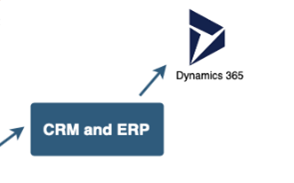
Businesses looking to automate core business processes typically look at two main software solutions, enterprise resource planning (ERP) and customer relationship management (CRM). ERP helps companies run successful businesses by connecting their financial and operational systems to a central database, while CRM helps manage how customers interact with their businesses.
Both serve as vital data repositories. Both also touch on multiple departments and, while they are sometimes built on the same platform, the software is often bought separately and integrated where needed.
This article will help identify the key characteristics of both CRM and ERP, how they differ and whether a business needs ERP, CRM or both
Dynamics 365 : a modular CRM, each module has a separate license. Key modules are: Sales, Marketing, Customer Service, Field Service, Finance, Commerce, Supply Chain Management, Human Resources.
Task management and project works
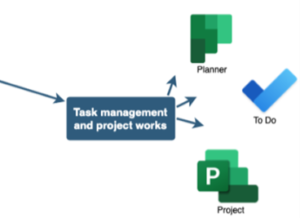 When to use?
When to use?
-
You are managing a solo project
-
You are managing a simple project with a team
-
You are managing a complex project with a team
-
You need resource management capabilities
-
You need timesheet submission capabilities
-
You need to view and compare how resources are used across projects to optimize assignments
-
You want to view all tasks in one tool
-
You want to use Planner and Project to manage projects and tasks
Than use Task Management and Project works, as: Planner; To Do; Project (including project online), and other related to.
A personal task manager. Users can group tasks, arrange them by levels (groups – lists – tasks – subtasks). It is possible to add notes, reminders and deadlines/dates to tasks. Tasks can be repeated (once a task is completed, the new one is created automatically). It is possible to mark important tasks. To-do lists can be shared. The app has a ‘My Day’ view, which allows you to add tasks ‘for today’.
A scrum board for small projects and teams. Functionality includes assigning tasks to users, going through project phases, file sharing, analysis.
A powerful app for managing large projects. There’s classic Microsoft Project, which requires a server and an installed app, and Project Online, a light version that only works in a browser. Both apps exist independently of each other.
Collaboration
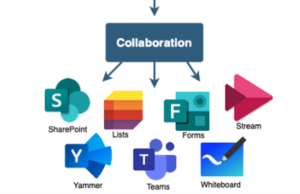
There are many ways for collaboration between office 365 apps.
We recommend collaboration between: Sharepoint, Lists, Forms, Stream, Yammer, Teams, Whiteboard.
All apps in this group, except Teams, only work in a browser.
A platform for creating company portals. One of the most important tools for corporate content management. It allows the creation of intranet sites of any complexity. It has a built-in search engine. By using SharePoint with some kind of workflow engine, you can automate business processes.
A component of SharePoint Online that supports creating lists and linking them to small databases. The lists can be any size, vertical and horizontal. There are some templates available. Lists can be built into Teams. Lists also have a calendar view to display information as a calendar.
A useful tool when you need to draw a diagram or a mind map during a meeting. Also supports Sticker Notes. Can be launched directly from Windows 10.
An app for creating surveys, quizzes, and polls. Supports different types of answers: multiple choice, free text, date, rating etc. The surveys can be shared within your company or you can send the link to external users. Survey results can be exported to Excel for analysis.
A social business network similar to Facebook. Users can create personal blogs, share photos, join various groups related to work and interests.
A corporate video service similar to YouTube. Employees can share recordings of meetings, presentations, lessons, training courses, etc. Video calls from Teams can also be saved in Stream. Videos can be grouped by playlists. Hashtags are supported, users can also easily share comments and tag timecodes in comments. External users can access videos through the link.
The premier app for employee collaboration. Teams supports chats, audio and video calls, and also collaborates on Office documents right in the app. Meetings can be scheduled through Outlook. Team members can easily find people, chats and files. Within those teams, different teams and channels can be organized. The app provides virtual rooms for quickly organizing meetings, supports bots, IP calls, integration with other Office 365 apps.
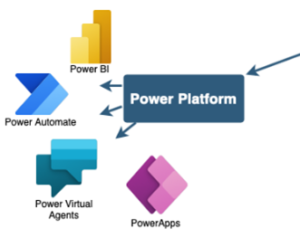
As Power Platforms you can use many apps within Office 365. You can select individual users, groups, or both as part of a collaboration. As headers of these platforms are recommended: PowerApps; Power Virtual Agents; Power Automate; Power BI.
A no-code and low-code business app builder. Integration with SharePoint, lists, and other Office 365 products are supported. PowerApps also supports over 300 dataflow connectors.
Is for creating chatbots without coding, with a user-friendly graphical interface.
A business process automation tool. Supports integration with many third-party services such as social networks, Trello, weather forecast services, news services, etc.
A system for visualization of reports and analytics. Supports connection to hundreds of data sources. Visual constructor provides more than 20 options for data visualization, it is also possible to buy extra or code yourself. For data processing, such languages as DAX, R, Python are used.
Employee Data and Discovery
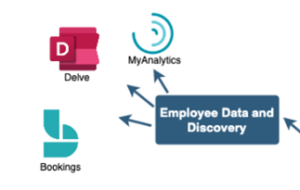
Employee Data can help you to analyze, structure and organize data, and as well as Microsoft Purview eDiscovery (Standard) in Microsoft Purview provides a basic eDiscovery tool that organizations can use to search and export content in Microsoft 365 and Office 365. Apps that offers this sub-family of Office 365 are: MyAnalytics; Delve; Bookings
Helps users analyze their time at work. It counts the time spent on calls, emails, team work, meetings, etc. MyAnalytics helps to realize a more productive use of time.
An Office 365 address book with organizational structure; content user profiles, their images and contacts. Enables easy search by profiles.
An app that helps small businesses that provide services by appointment to organize their time. Examples of such businesses: hair salons, consultants, dental practices, law firms, car shops, etc. Customers can book the time of the visit themselves.



 When to use?
When to use?



